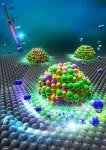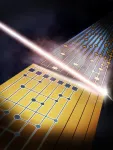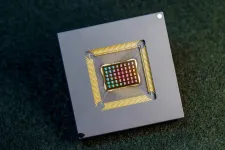(Press-News.org) A review article about the future of neuromorphic computing by a team of 23 researchers, including two authors from UTSA, was published today in Nature. Dhireesha Kudithipudi, the Robert F. McDermott Endowed Chair in Engineering and founding director of MATRIX: The UTSA AI Consortium for Human Well-Being, served as the lead author, while Tej Pandit, a UTSA doctoral candidate in computer engineering, is one of the co-authors. The review article, titled “Neuromorphic Computing at Scale,” examines the state of neuromorphic technology and presents a strategy for building large-scale neuromorphic systems.
The research is part of a broader effort to advance neuromorphic computing, a field that applies principles of neuroscience to computing systems to mimic the brain’s function and structure. Neuromorphic chips have the potential to outpace traditional computers in energy and space efficiency as well as performance, presenting substantial advantages across various domains, including artificial intelligence, health care and robotics. As the electricity consumption of AI is projected to double by 2026, neuromorphic computing emerges as a promising solution.
The authors say that neuromorphic systems are reaching a “critical juncture,” with scale being a key metric to track the progress of the field. Neuromorphic systems are rapidly growing, with Intel’s Hala Point already containing 1.15 billion neurons. The authors argue that these systems will still need to grow considerably larger to tackle highly complex, real-world challenges.
“Neuromorphic computing is at a pivotal moment, reminiscent of the AlexNet-like moment for deep learning,” said Kudithipudi. “We are now at a point where there is a tremendous opportunity to build new architectures and open frameworks that can be deployed in commercial applications. I strongly believe that fostering tight collaboration between industry and academia is the key to shaping the future of this field. This collaboration is reflected in our team of co-authors.”
Kudithipudi has done extensive work in the field of neuromorphic computing. Last year, she secured a $4 million grant from the National Science Foundation to launch THOR: The Neuromorphic Commons, a first-of-its-kind research network providing access to open neuromorphic computing hardware and tools in support of interdisciplinary and collaborative research. Catherine Schuman (University of Tennessee, Knoxville) and Gert Cauwenberghs (University of California, San Diego), co-authors on the article, are also co-investigators on THOR.
In addition to expanded access, the team also calls for the development of a wider array of user-friendly programming languages to lower the barrier of entry into the field. They believe this would foster increased collaboration, particularly across disciplines and industries.
Steve Furber, emeritus professor of computer engineering at the University of Manchester, is among the authors on the project. Furber specializes in neural systems engineering and asynchronous systems. He led the development of the million-core SpiNNaker1 neuromorphic computing platform at Manchester and co-developed SpiNNaker2 with TU Dresden.
“Twenty years after the launch of the SpiNNaker project, it seems that the time for neuromorphic technology has finally come, and not just for brain modeling, but also for wider AI applications, notably to address the unsustainable energy demands of large, dense AI models,” said Furber. “This paper captures the state of neuromorphic technology at this key point in its development, as it is poised to emerge into full-scale commercial use.”
To achieve scale in neuromorphic computing, the team proposes several key features that must be optimized, including sparsity, a feature observed in the biological brains. The brain develops by forming numerous neural connections (densification) before selectively pruning most of them. This strategy optimizes spatial efficiency while retaining information at high fidelity. If successfully emulated, this feature could enable neuromorphic systems that are significantly more energy-efficient and compact.
“This paper is one of the most collaborative efforts to date toward outlining the field of neuromorphic computing with emphasis on scale, ecosystem and outreach between researchers, students, consumers and industry,” said Pandit. “Representatives of many key research groups came together to share crucial information about the current state and future of the field with the goal of making large-scale neuromorphic systems more mainstream.”
Pandit is pursuing his doctoral degree at UTSA under Kudithipudi. His focus is on training AI systems to learn continually without overwriting existing information. He recently published about the topic.
“UTSA is deeply invested in developing knowledge in this field, which has the potential to catalyze a number of technologies and address grand challenges in the world today such as energy waste and trustworthy AI,” said JoAnn Browning, UTSA interim vice president for research. “I am extremely proud to see Dr. Kudithipudi and Tej Pandit making such significant contributions to harness the power of this promising technology, particularly on the heels of the launch of UTSA's new neuromorphic commons, THOR.”
The UTSA researchers worked with esteemed authors from various institutions, national laboratories and industry partners. These include the University of Tennessee, Knoxville, Sandia National Laboratories, Rochester Institute of Technology, the University of Pittsburgh, Intel Labs, Technische Universität Dresden, the U.S. Naval Research Laboratory, Google DeepMind, the Italian Institute of Technology, UC San Diego, the Institute of Neuroinformatics at the University of Zürich and ETH Zürich, the National Institute of Standards and Technology, Oak Ridge National Laboratory, SpiNNcloud Systems GmbH, the Indian Institute of Science, Royal Holloway, University of London, and The University of Manchester. This collaboration underscores the extensive network and interdisciplinary approach taken by UTSA researchers to advance their groundbreaking work.
END
A groundbreaking approach: Researchers at The University of Texas at San Antonio chart the future of neuromorphic computing
The review article published in Nature, titled “Neuromorphic Computing at Scale,” examines the state of neuromorphic technology and presents a strategy for building large-scale neuromorphic systems.
2025-01-24
ELSE PRESS RELEASES FROM THIS DATE:
Long COVID, Italian scientists discovered the molecular ‘fingerprint’ of the condition in children's blood
2025-01-24
One day Long Covid in children could be objectively diagnosed with a blood test, thanks to the help of Artificial Intelligence (AI). In fact, a study by the Università Cattolica del Sacro Cuore, Rome campus - Fondazione Policlinico Universitario Agostino Gemelli IRCCS and the Ospedale Pediatrico Bambino Gesù IRCCS, has highlighted the molecular signature of Long Covid in plasma in paediatric age and used an AI tool capable of making the diagnosis based on the results of the blood sample, with 93% ...
Battery-powered electric vehicles now match petrol and diesel counterparts for longevity
2025-01-24
Battery-powered electric vehicles are now more reliable and can match the lifespans of traditional cars and vans with petrol and diesel engines - marking a pivotal moment in the drive towards sustainable transportation, a new study reveals.
Researchers used nearly 300 million UK Ministry of Transport (MOT) test records charting the ‘health’ of every vehicle on the United Kingdom’s roads between 2005 and 2022 to estimate vehicle longevity and provide a comprehensive analysis of survival rates for different powertrains.
The international research ...
MIT method enables protein labeling of tens of millions of densely packed cells in organ-scale tissues
2025-01-24
A new technology developed at MIT enables scientists to label proteins across millions of individual cells in fully intact 3D tissues with unprecedented speed, uniformity, and versatility. Using the technology, the team was able to richly label whole rodent brains and other large tissue samples in a single day. In their new study in Nature Biotechnology, they also demonstrate that the ability to label proteins with antibodies at the single-cell level across whole brains can reveal insights left hidden by other widely used labeling methods.
Profiling the proteins that cells are making is a staple of studies in biology, neuroscience and related fields because the ...
Calculating error-free more easily with two codes
2025-01-24
Computers also make mistakes. These are usually suppressed by technical measures or detected and corrected during the calculation. In quantum computers, this involves some effort, as no copy can be made of an unknown quantum state. This means that the state cannot be saved multiple times during the calculation and an error cannot be detected by comparing these copies. Inspired by classical computer science, quantum physics has developed a different method in which the quantum information is distributed across several entangled quantum bits and stored redundantly in this ...
Dissolving clusters of cancer cells to prevent metastases
2025-01-24
Certain tumour types do not remain at their point of origin but spread throughout the body and form metastases. This is because the primary tumour continuously releases cancer cells into the blood. These circulating tumour cells (CTCs) can join together into small clusters of up to a dozen cells and settle in other organs. There, the clusters grow into larger tumours, known as metastases. Metastatic tumours are still a major medical problem: every year, around seven million people worldwide die from them.
One example of such a spreading tumour is breast cancer. As soon ...
A therapeutic HPV vaccine could eliminate precancerous cervical lesions
2025-01-24
PHILADELPHIA – A therapeutic vaccine targeting human papillomavirus type 16 (HPV16) induced regression in high-grade precancerous cervical lesions, according to the results from a phase II clinical trial published in Clinical Cancer Research, a journal of the American Association for Cancer Research.
“Nearly all premalignant cervical lesions and cervical cancers are caused by HPV infection, with HPV16 implicated in the majority of cases,” said Refika Yigit, MD, principal investigator and oncological gynecologist at University Medical Centre Groningen in the ...
Myth busted: Healthy habits take longer than 21 days to set in
2025-01-24
We’re nearly one month into 2025, but if you’re struggling to hold onto your New Year’s resolution, stay strong, as University of South Australia research shows that forming a healthy habit can take longer than you expect.
In the first systematic review of its kind, UniSA researchers found that new habits can begin forming within about two months (median of 59–66 days) but can take up to 335 days to establish.
It’s an important finding that could inform health interventions to ...
Development of next-generation one-component epoxy with high-temperature stability and flame retardancy
2025-01-24
Two-component epoxies, which require mixing resin and curing agent before use, often suffer from issues such as mixing ratio errors, limited working times, and inconsistent curing. Additionally, they must be used immediately after mixing, leading to wasted residue. To address these challenges, one-component epoxies have gained attention. One-component epoxies come pre-mixed, making them easy to use, reducing processing time, and ensuring consistent quality without mixing. In particular, using latent curing agents allows curing to be triggered only under specific conditions (e.g., heat or UV exposure), significantly improving storage stability. However, ...
Scaling up neuromorphic computing for more efficient and effective AI everywhere and anytime
2025-01-24
Neuromorphic computing—a field that applies principles of neuroscience to computing systems to mimic the brain’s function and structure—needs to scale up if it is to effectively compete with current computing methods. In a review published Jan. 22 in the journal Nature, 23 researchers, including two from the University of California San Diego, present a detailed roadmap of what needs to happen to reach that goal. The article offers a new and practical perspective toward approaching the cognitive capacity of the human brain with comparable form factor and power consumption.
“We ...
Make it worth Weyl: engineering the first semimetallic Weyl quantum crystal
2025-01-24
An international team of researchers led by the Strong Correlation Quantum Transport Laboratory of the RIKEN Center for Emergent Matter Science (CEMS) has demonstrated, in a world’s first, an ideal Weyl semimetal, marking a breakthrough in a decade-old problem of quantum materials.
Weyl fermions arise as collective quantum excitations of electrons in crystals. They are predicted to show exotic electromagnetic properties, attracting intense worldwide interest. However, despite the careful study of thousands of crystals, most ...
LAST 30 PRESS RELEASES:
Exploring how the visual system recovers following injury
Support for parents with infants at pediatric check-ups leads to better reading and math skills in elementary school
Kids’ behavioral health is a growing share of family health costs
Day & night: Cancer disrupts the brain’s natural rhythm
COVID-19 vaccination significantly reduces risk to pregnant women and baby
The role of vaccination in maternal and perinatal outcomes associated with COVID-19 in pregnancy
Mayo Clinic smartwatch system helps parents shorten and defuse children's severe tantrums early
Behavioral health spending spikes to 40% of all children’s health expenditures, nearly doubling in a decade
Digital cognitive behavioral treatment for generalized anxiety disorder
Expenditures for pediatric behavioral health care over time and estimated family financial burden
Air conditioning in nursing homes and mortality during extreme heat
The Alps to lose a record number of glaciers in the next decade
What makes a good proton conductor?
New science reporting guide published for journalists in Bulgaria
New international study reveals major survival gaps among children with cancer
New science reporting guide published for journalists in Turkey
Scientists develop a smarter mRNA therapy that knows which cells to target
Neuroanatomy-informed brain–machine hybrid intelligence for robust acoustic target detection
Eight SwRI hydrogen projects funded by ENERGYWERX
The Lundquist Institute and its start-up company Vitalex Biosciences Announces Strategic Advancement of Second-Generation fungal Vaccine VXV-01 through Phase 1 Trials under $40 Million Competitive Con
Fine particles in pollution are associated with early signs of autoimmune disease
Review article | Towards a Global Ground-Based Earth Observatory (GGBEO): Leveraging existing systems and networks
Penn and UMich create world’s smallest programmable, autonomous robots
Cleveland researchers launch first major study to address ‘hidden performance killer’ in athletes
To connect across politics, try saying what you oppose
Modulating key interaction prevents virus from entering cells
Project explores barriers to NHS career progression facing international medical graduates
Jeonbuk National University researchers explore the impact of different seasonings on the flavor perception of Doenjang soup
Two Keck Medicine of USC Hospitals named Leapfrog Top Teaching Hospitals
World-first discovery uncovers how glioblastoma tumours dodge chemotherapy, potentially opening the door to new treatments
[Press-News.org] A groundbreaking approach: Researchers at The University of Texas at San Antonio chart the future of neuromorphic computingThe review article published in Nature, titled “Neuromorphic Computing at Scale,” examines the state of neuromorphic technology and presents a strategy for building large-scale neuromorphic systems.





